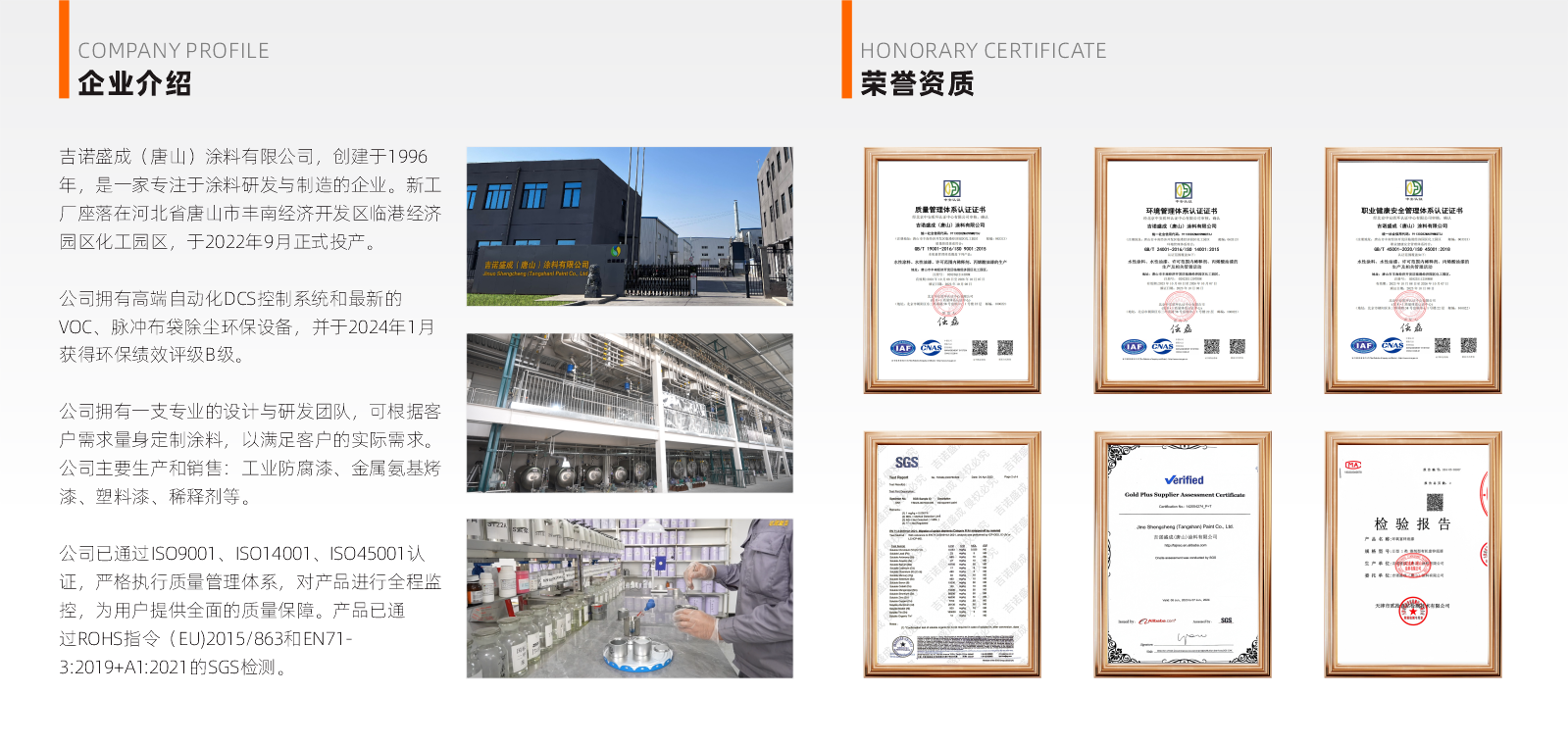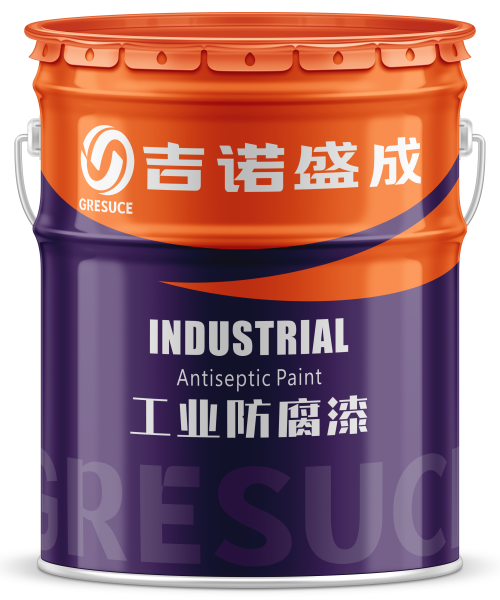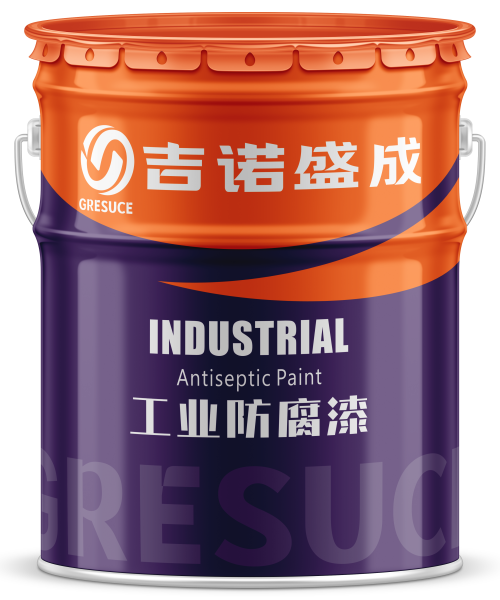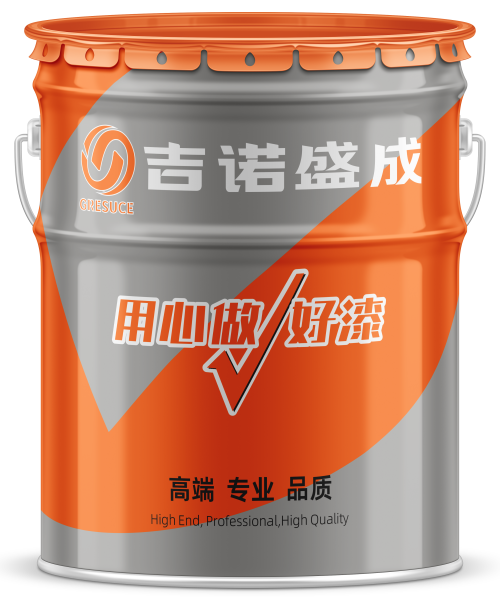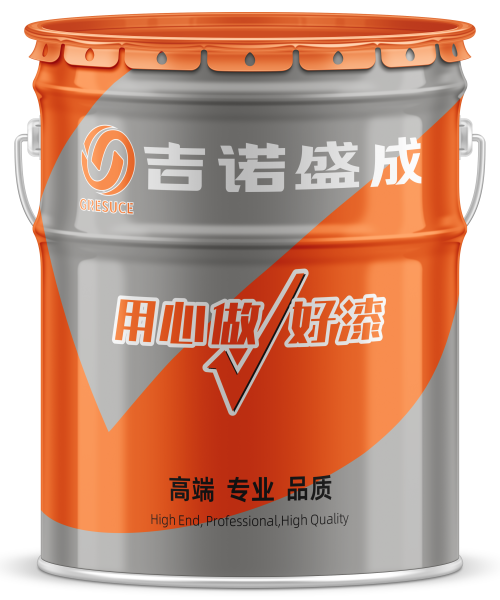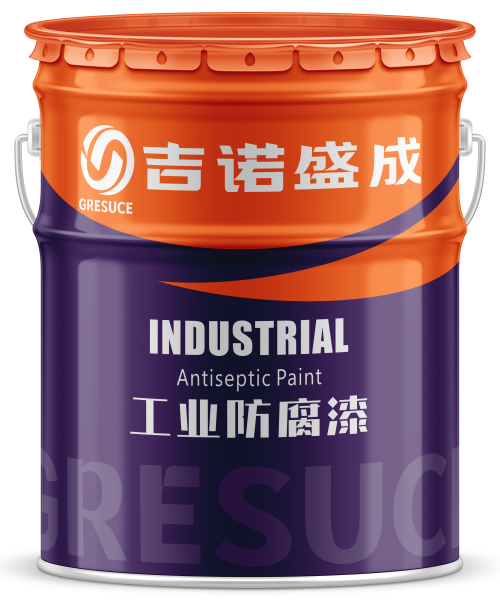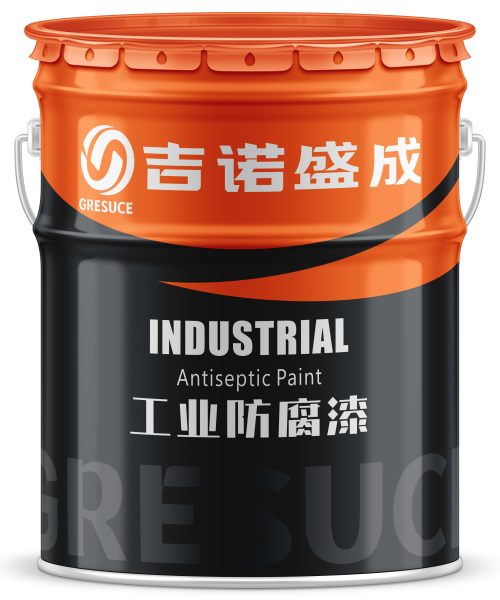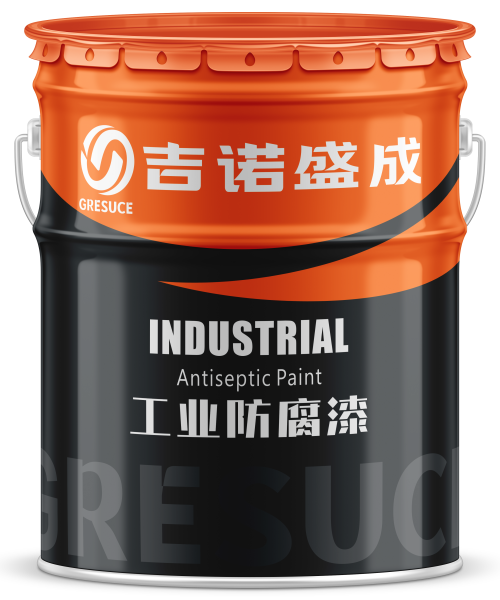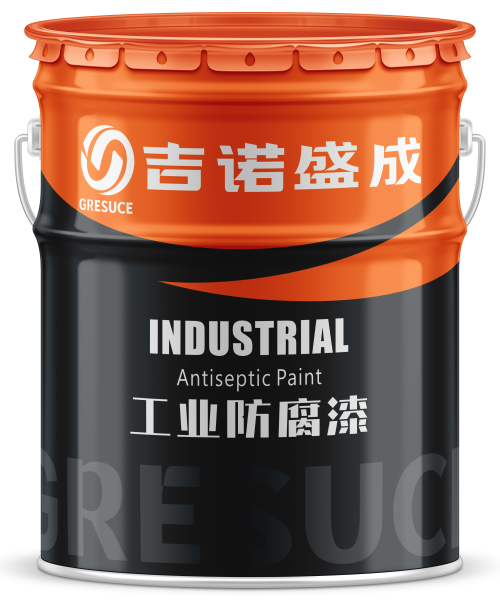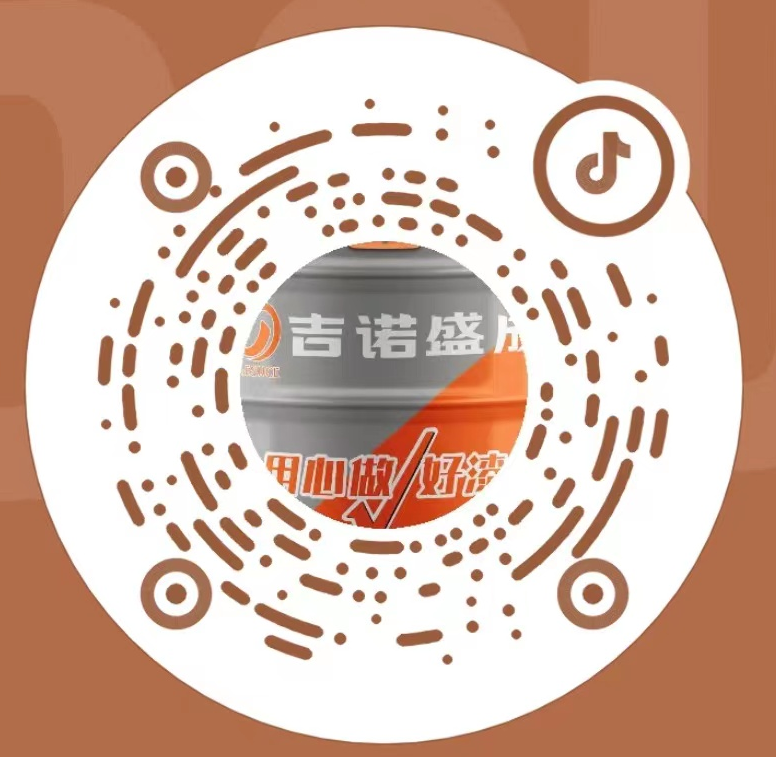Paint Factory Inspection Items
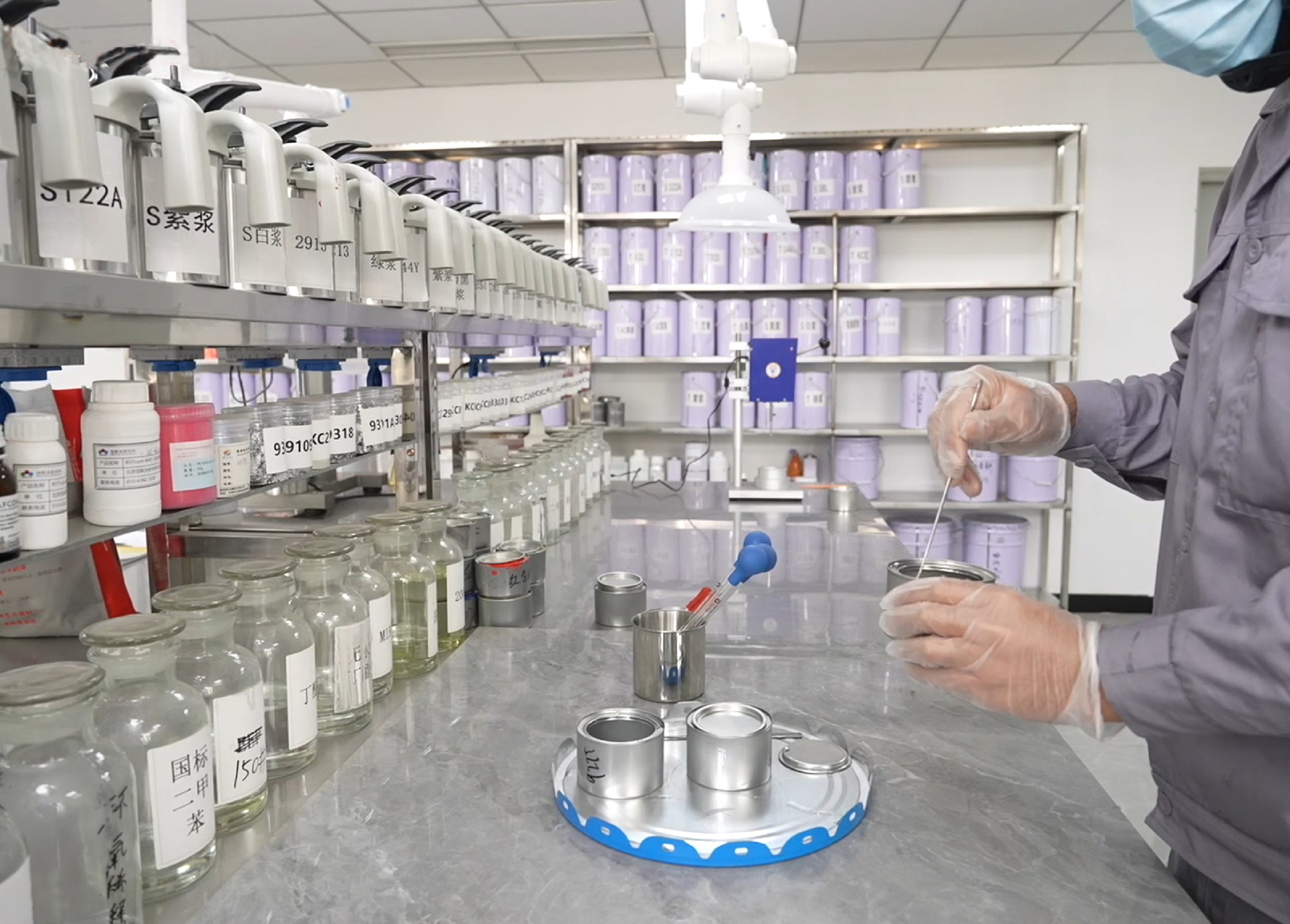
Jinuoshengcheng brand industrial anti-corrosion paint must undergo various tests before leaving the factory to ensure its quality and performance.
Below are the detailed descriptions of each inspection item.
1. Appearance Inspection
The appearance inspection focuses on the condition of the paint in the container, ensuring it is free from hard lumps and appears uniform after stirring.
- Inspection Items:
- Check for phenomena such as stratification, sedimentation, or clumping.
- Verify whether the paint can return to a uniform state after stirring.
2. Application Performance Inspection
The application performance inspection evaluates the paint's workability to ensure smooth application without issues.
- Inspection Items:
- Assess the paint's fluidity and brushability to ensure easy application without sagging or brush marks.
- Examine the paint's performance under different temperature and humidity conditions.
3. Component Content Testing
Some paints undergo content testing for specific components before leaving the factory. For example, Epoxy Zinc-Rich Primers and Cold Galvanizing Paints are tested for zinc content.
- Testing Methods:
- Use chemical analysis or instrumental analysis to determine the content of specific components in the paint. For instance, atomic absorption spectroscopy is employed to measure zinc content.
4. Drying Time Measurement
Drying time is one of the critical indicators in paint testing, as it directly affects the construction cycle and service life of the coating.
- Measurement Methods:
- Drying Time Measurement Instruments: Standardized instruments are used to measure the time required for the paint to dry from a wet film to a fully cured state.
- The drying time is determined based on the film-forming mechanism of the paint and the drying conditions (e.g., temperature, humidity).
5. Viscosity Measurement
Viscosity is one of the key parameters in paint testing, as it reflects the fluidity and application performance of the coating.
- Common Measurement Methods:
- Centrifugal Viscometer: Measures the viscosity of low-viscosity paints using centrifugal force.
- Rotational Viscometer: Measures viscosity by rotating a spindle at different speeds, suitable for medium- to high-viscosity paints.
- Viscosity Cup: Determines viscosity by measuring the time it takes for the paint to flow out of the cup, ideal for quick on-site testing.
6. Hardness Measurement
Hardness measurement evaluates the wear resistance and scratch resistance of a coating to determine its quality.
- Testing Methods:
- Pencil Hardness Test: Use pencils of varying hardness to draw lines on the coating surface, assessing the film's hardness based on the results.
- Pendulum Hardness Test: Apply pressure to the coating surface using a pendulum device to measure its resistance to scratching.
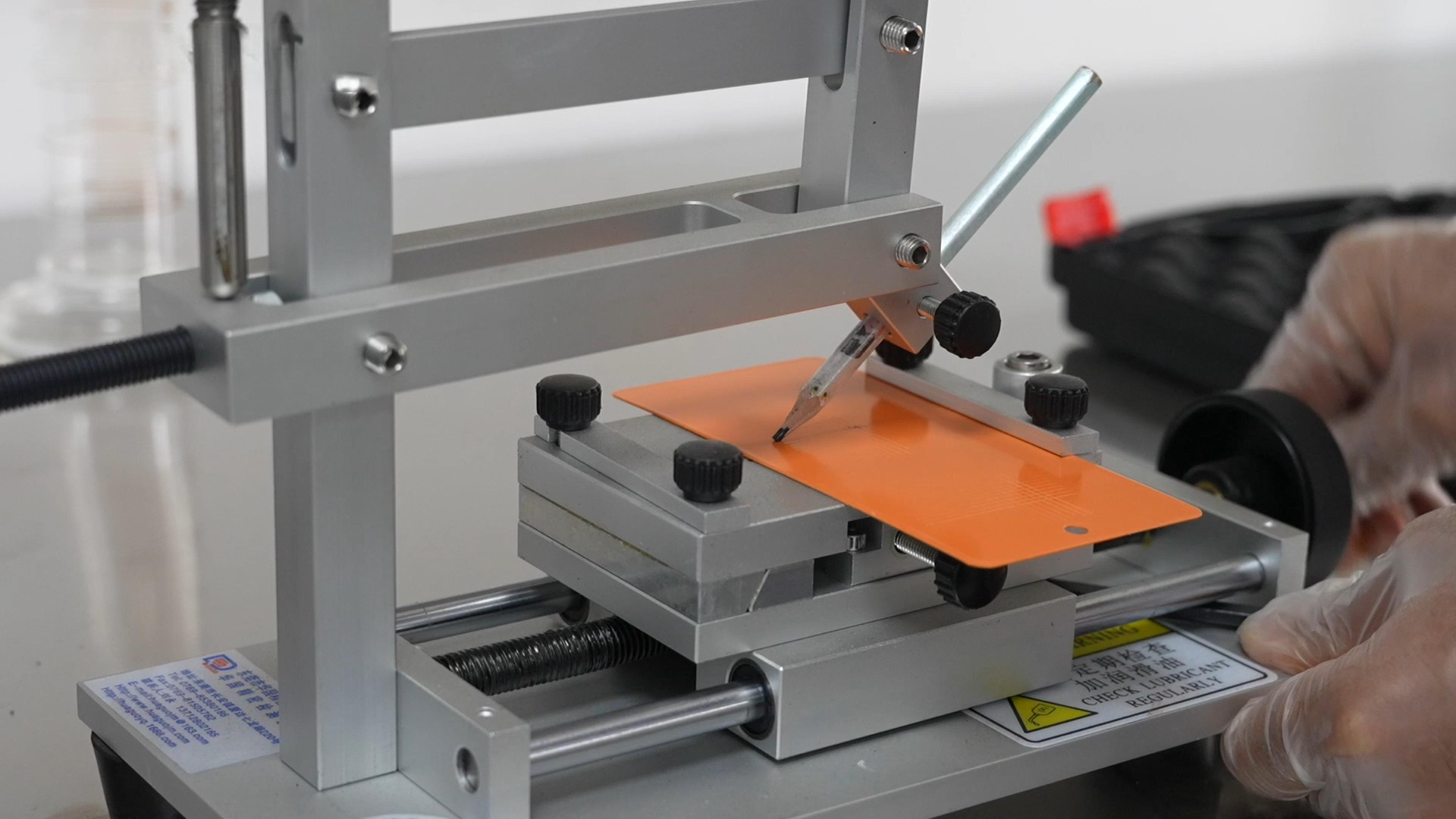
7. Impact Resistance Testing
Impact resistance testing evaluates the coating's ability to withstand external force impacts without damage.
- Testing Methods:
- Use an impact tester to apply a specific force to the coating surface and observe whether cracks or peeling occur.
8. Adhesion Testing
Adhesion testing assesses the bonding strength between the coating and the substrate.
- Testing Methods:
- Cross-Cut Test: A grid pattern is cut into the coating surface, adhesive tape is applied and then peeled off to observe the extent of coating detachment.
- Pull-Off Test: A specialized device is used to vertically pull a dolly attached to the coating, measuring the force required to detach the coating from the substrate.
9. Pot Life Testing
For two-component paints, pot life testing is essential to evaluate the usability of the mixed paint within a specific time frame.
- Testing Methods:
- After mixing the two components in the correct ratio, measure changes in performance over time, such as viscosity and curing behavior.
Through these rigorous inspections, Jinuoshengcheng brand industrial anti-corrosion paint is ensured to have excellent performance and reliable quality before leaving the factory. This guarantees that the paint meets the demanding requirements of various industrial environments.
